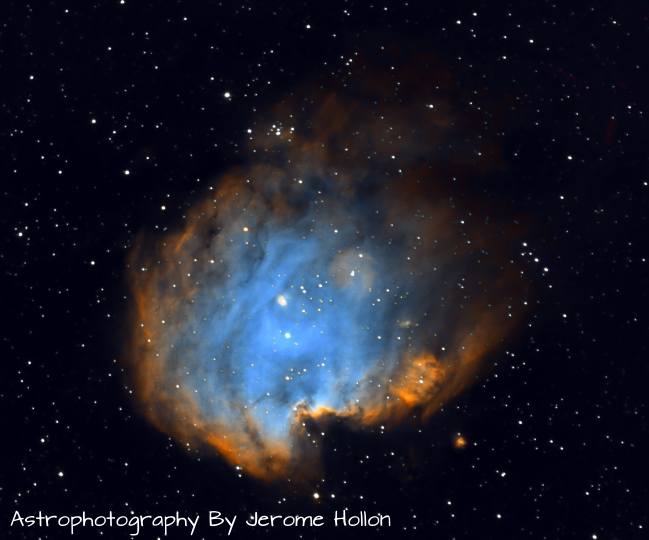Monkey Head Nebula
This is the Monkey Head Nebula. Supposedly it looks like a profile of a monkey head, but I can’t see it. Maybe you can! It’s an emission nebula in the Orion constellation, though it is not Orion’s Nebula, that’s M42, I’ve captured M42 twice, once in 2021 and in 2020. The Orion constellation is a wealth of awesome nebula, Barnard’s Loop is one I hope to image this year if the weather cooperates.
Anyway, more about the Monkey Head Nebula. It’s a pretty large nebula, covering an area in the sky that is 40 arc minutes wide. This is roughly the size of the full moon. Though, the monkey head nebula only has a magnitude of 6.8, you won’t be able to see it at night with the naked eye, no matter how dark of a site you’re at. Magnitude is a great way to describe the brightness of stars and other single sources of light, it’s not so great for nebula, since it’s a measure of all the brightness produced by the object. A magnitude 6 star can be seen with the naked eye, but a magnitude 6 nebula cannot, since it’s brightness is spread out over a wider area and not focused into a pinpoint. Despite this, the nebula was discovered in 1654 by an astronomer named Giovanni Hodierna, an italian astronomer who, like Messier, was focused primarily on finding comets. He compiled a catalog too like Messier, but it only contained 40 objects, only 19 have been confirmed to be real objects.
The naming for this nebula is a bit contentious. NGC 2174 is technically the nebula and NGC 2175 is the open cluster of stars in it. However, older star guides list the nebula as being both, and an attempt to settle the matter by the NGC Project make things even more confusing by saying only the brightest section of the nebula as NGC 2174 and everything else (open cluster too) NGC 2175. To me, the easiest way to refer to it is either with its common name, Monkey Head Nebula, or the shapeless catalog designation SH 2-252, since it explicitly describes the entire nebula.
